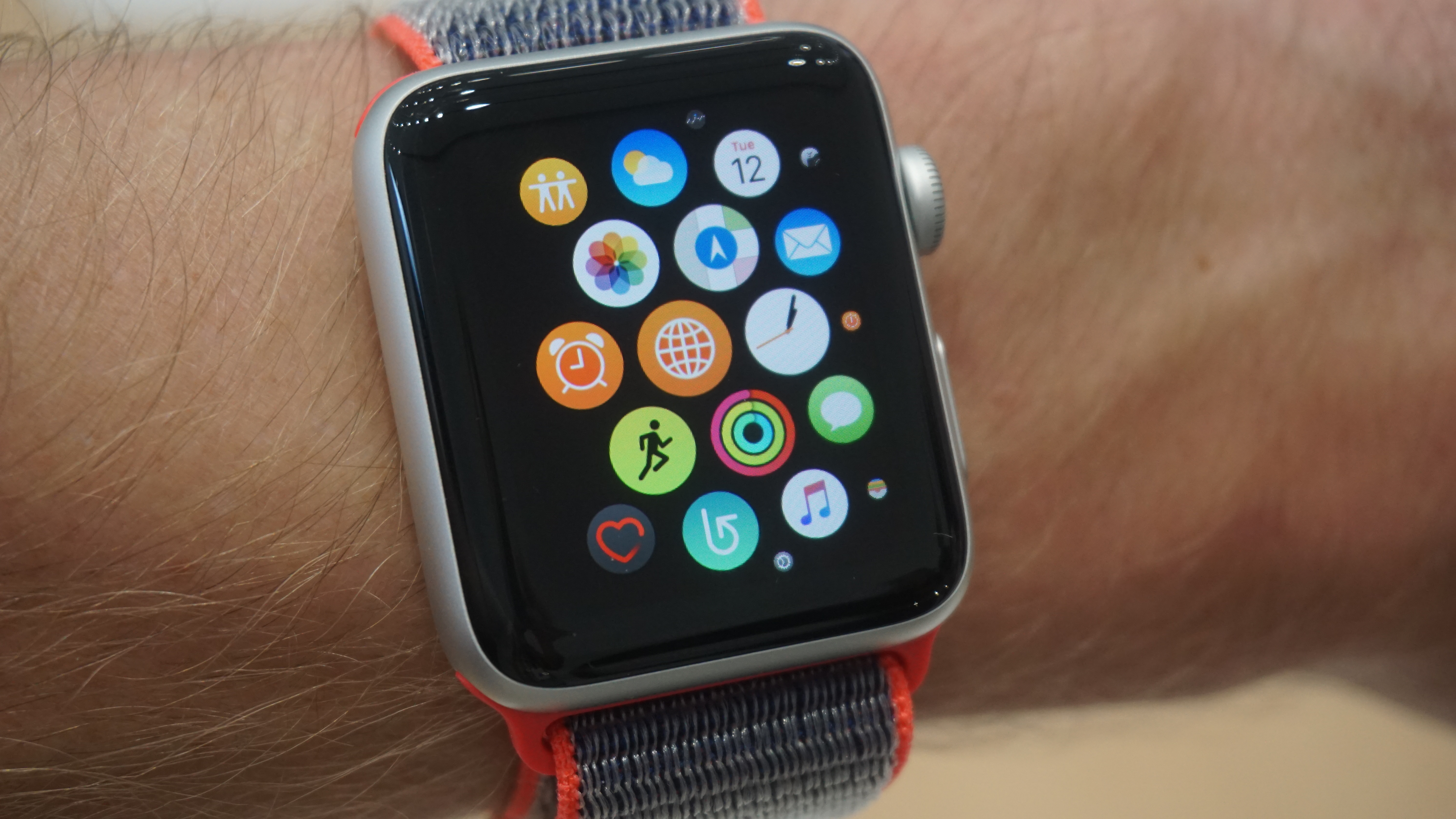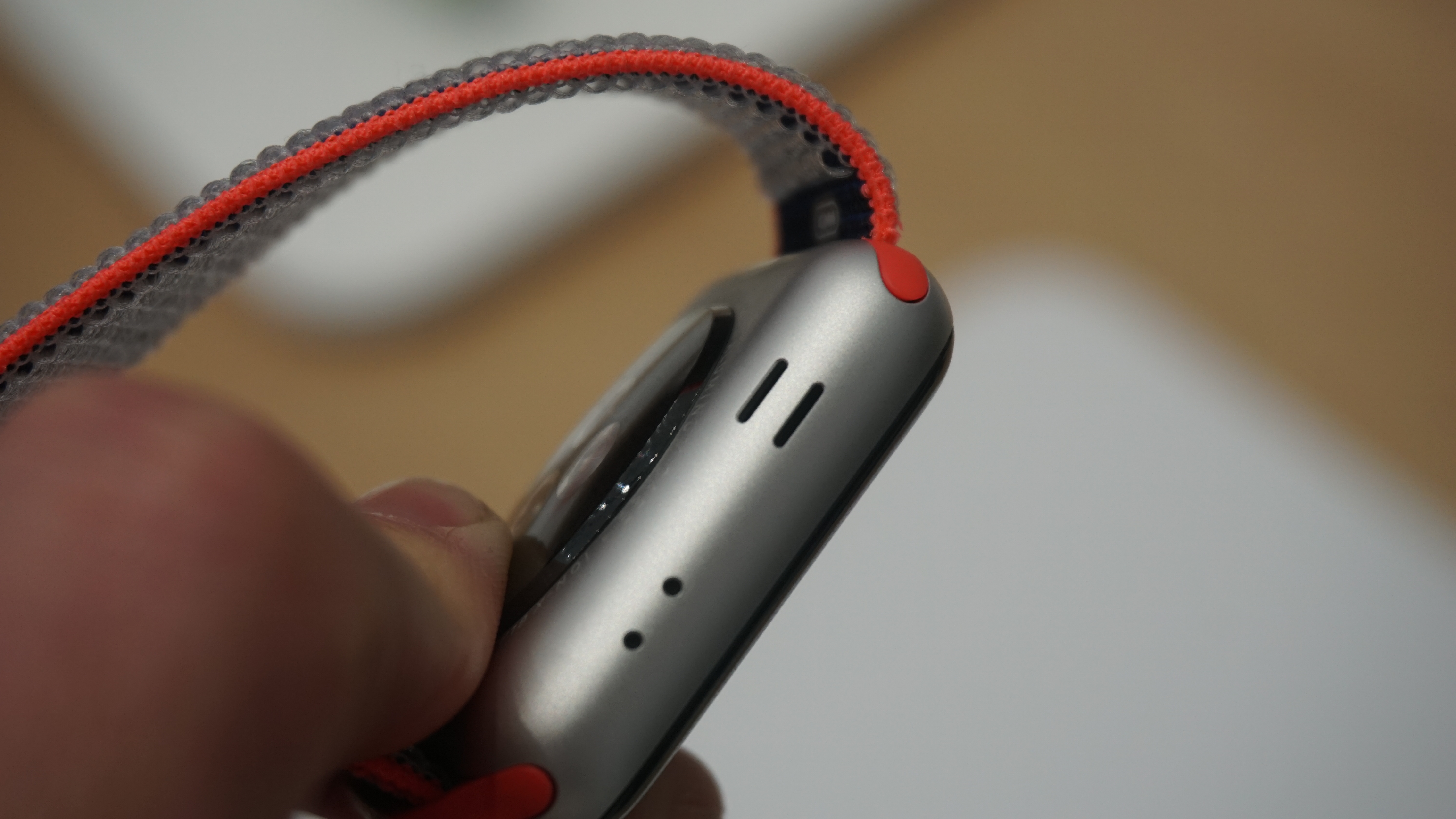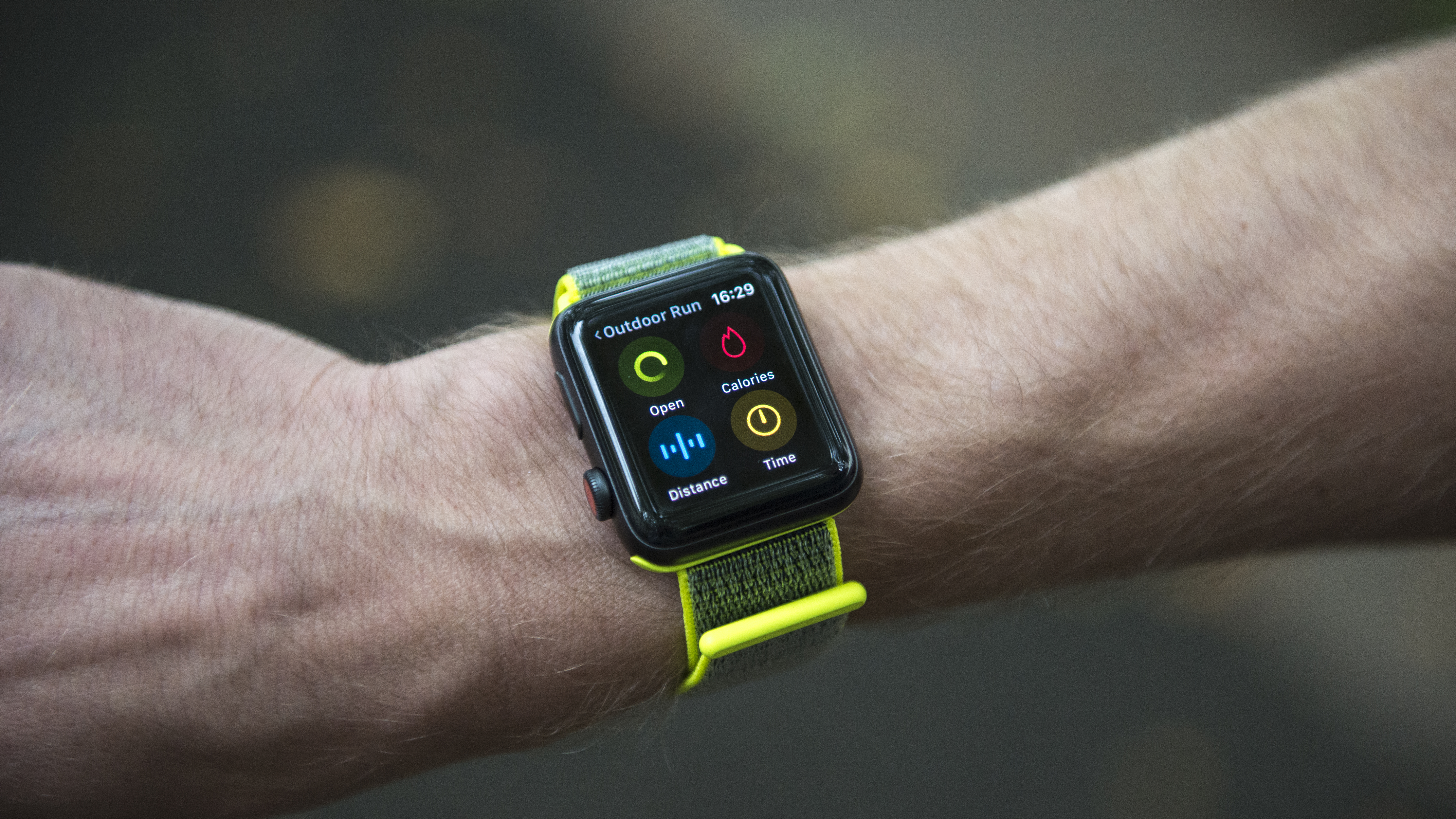Why you can trust TechRadar
- Faster dual-core processor
- WatchOS 4 was a great upgrade
- Now runs watchOS 6 software
If you've used an Apple Watch in any way before, there won't be a lot that's alien to you on the Watch 3. The process for using it is exactly the same, apart from a couple of key differences.
Firstly, the dock (summoned by pressing the power button once) is finally a useful feature. When the original Watch launched, pressing this button just opened a menu of contacts who you could scribble rude messages to. It was pointless.
Now, it's a scrollable dock of your latest apps, as Apple has managed to tweak the software to enable them to stay in a kind of stasis and not destroy your battery life.
Flicking through the dock is a pleasant experience, and much nicer when you're working out and quickly want to jump to the music player to change tracks.
While Apple is touting the speed of the Watch, there's still an element of delay in the process that can irk – it's subtle, but when trying to get back to the main Watch face it can take a couple of incorrect clicks of the Digital Crown before you get there, when you expect it to act instantly like a home button.
You'll also be subject to a spinning icon when trying to enter some apps - we can't see why, with the faster processor, the Timer app won't load instantly, for example.

The rest of the interface is very similar to before – it's quite hard to hit the right app in the main 'spread' of apps, although you can zoom in for more accuracy.
Increasingly we found ourselves using Siri for the task by simply holding the Digital Crown to get something to start. However, some apps didn't want to open this way (or, in the case of Strava, claimed to not be installed properly despite being part of the app list to choose from), so there's still a little bit of work to do there.

Siri's ability to talk is useful when driving, for instance. If you want the Watch to do something like skip a track or look for something to play, not taking your eyes off the road is a must, and having that vocal feedback is really necessary.
However, at other times you don't always want the back-chat – it's bad enough talking to your Watch in public already, let alone suffering the embarrassment of being told 'Hmmm, I didn't quite catch that' or the fairly regular times when Siri would hang and not connect to the server.

It feels like we’re still saying the same things about Siri as on the iPhone years ago – if the commands aren’t accurately heard and flawlessly handled, people will lose interest. And when we ask to start a run, only to be told that Siri will get back to us when it’s ready, it makes us not want to use it.
Apple has said Siri’s speaking capability is borne of the new processor inside, which is powerful and fast enough to offer voice response. Did we notice a real speed upgrade? Not really, but it is more rapid than the base model Apple Watch Series 1.
The operating system is better than before, as mentioned. Things like Breathe, where the watch will poke you to spend some time deeply inhaling to de-stress, do offer real benefits if you make the time to use them.
The Taptic Engine inside the device, which can create distinct vibrating patterns depending on what it’s trying to tell you, feels incredibly intelligent compared to something that just buzzes to say ‘hey, there’s a thing to tell you about’.

The distinctions are subtle yet noticeable, and once you get your head around the difference between a tap for an iMessage and a notification that you’ve run a mile it's easy to know whether it’s worth checking your wrist.
And of all the watchOS 4 upgrades, our favorite is the Torch / Flashlight (depending on your country), which makes the screen bright white and is perfect for that moment when you’re looking under the bed in the dark and need a bit more illumination to know if that really is a sock or something the cat dragged in.
However, there are still some limitations that we didn’t expect with something as powerful as the Apple Watch 3. For starters, opening many apps will still see a swirling app icon in the middle of the screen as it loads – why does it take a second or two to boot up the Timer app?
And changing anything on the Watch still requires you to go into the app on your iPhone, with minimal settings or app alterations available from the device.
Apps are probably still the biggest bugbear of the Watch, to be honest. Some still didn’t work when loaded and needed re-installing, and of all the apps we’ve got on the device (as they were already on the phone) we barely used any.
They’re still mostly novelty – yes, it’s fun to order a pizza from your wrist, or interesting to check how much money you’ve got left in a budget, but each time you feel a bit lazy for not doing it ‘properly’ on your phone.
We found the Watch 3 far better if apps were uninstalled then added one by one to prove their use - for instance, titles like RunGo, which can work independently and tell you about runs in new places is a great addition.
The Apple Watch 3 can now also be upgraded to watchOS 6 too, so you can make use of a lot of new software features, including an App Store on your wrist. That followed on from an update to watchOS 5, which added the likes of Siri Shortcuts and a Walkie-Talkie feature.
- Our guide to the very best Apple Watch apps
Image Credit: TechRadar
Current page: Specs, watchOS 6 and a new engine
Prev Page LTE, design and screen Next Page Apple Watch 3 fitness
Gareth has been part of the consumer technology world in a career spanning three decades. He started life as a staff writer on the fledgling TechRadar, and has grew with the site (primarily as phones, tablets and wearables editor) until becoming Global Editor in Chief in 2018. Gareth has written over 4,000 articles for TechRadar, has contributed expert insight to a number of other publications, chaired panels on zeitgeist technologies, presented at the Gadget Show Live as well as representing the brand on TV and radio for multiple channels including Sky, BBC, ITV and Al-Jazeera. Passionate about fitness, he can bore anyone rigid about stress management, sleep tracking, heart rate variance as well as bemoaning something about the latest iPhone, Galaxy or OLED TV.
